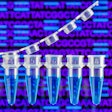
The global market for clinical laboratory services is estimated at $121.5 billion for 2019, having risen by 2.9% per year from an estimated value of $93.9 billion in 2010, according to a new report from Kalorama Information.
Clinical laboratories are an essential part of the health industry, Kalorama noted. It is estimated that 70% to 80% of diagnoses by physicians result from laboratory tests, and clinical laboratory services are involved in 100% of patient care plans in oncology indications.
Several drivers are affecting the steady growth of this market. These include an aging population, a growing incidence of chronic diseases and management, increasing emphasis on diagnosis and disease monitoring, and growth in advanced laboratory testing technologies and practices. However, there are also a number of inhibitors to growth, such as the growing emphasis on reducing health costs and uncertain economic conditions.
Global markets for clinical laboratory services are expected to increase at a compound annual growth rate (CAGR) of 3.8% over the next five years, reaching a market value of $146.4 billion by 2024. Clinical chemistry (routine and essential testing) by far represents the largest market segment, followed by immunology and microbiology.
U.S. on top
The U.S. and China are the most attractive clinical laboratory markets for growth and new opportunities, according to the report. The U.S. is the largest market based on clinical laboratory revenues, accounting for 53% of the global total, according to the analysis. Metrics that explain this positioning include its growing aging population, a high diabetes prevalence rate, and established regulatory and reimbursement systems.
The clinical laboratory market in the U.S. is highly competitive, with more than 400 providers of lab services in operation. Quest Diagnostics and LabCorp are virtually tied at the top in terms of market share. In 2019, Quest had $7.3 billion in U.S. revenue and an 11% share of that market. Quest continues to focus on providing top quality service to the laboratory industry and has remained competitive through several strategic acquisitions and alliances.
LabCorp is close with estimated revenue of $6.8 billion and a market share of 10% in 2019. The company continues to strengthen its position in the market through unique product offerings and strategic alliances.
Preventative approach drives orders
The U.S. market is mature, and it continues to struggle with competition; however, some growth is expected for specialty testing. Testing volume is expected to increase during the 2019-2024 period as a preventative approach to healthcare drives orders.
 Bruce Carlson of Kalorama Information.
Bruce Carlson of Kalorama Information.Test pricing is expected to be affected by government attempts to control costs, such as the Centers for Medicare and Medicaid Services' (CMS) revised reimbursement schedules. New schedules are based on an average of reported test prices by labs across the nation, and there has been a trend toward reduced reimbursement for a variety of tests.
Esoteric testing is scrutinized by payors because of the higher costs, and payors continue to impose limitations and "medical necessity" clauses to limit payments in some areas. Proving medical necessity entails a written explanation from the patient's provider of why the test was something a prudent physician would use. A payor may also request medical records to verify the claims.
Growth in genetic testing in markets outside the U.S. is increasing and resulting in new opportunities for market expansion, according to the report. Emerging economies will be a source of new growth for the market, broadly speaking, in the future. Key emerging markets for clinical laboratory services and products include the following:
- Argentina
- Brazil
- China
- India
- Korea
- Mexico
- Russia
- Turkey
Bruce Carlson is the publisher of market research firm Kalorama Information, part of Science and Medicine Group.
Disclosure: LabPulse.com is a sister company of Kalorama Information.



















